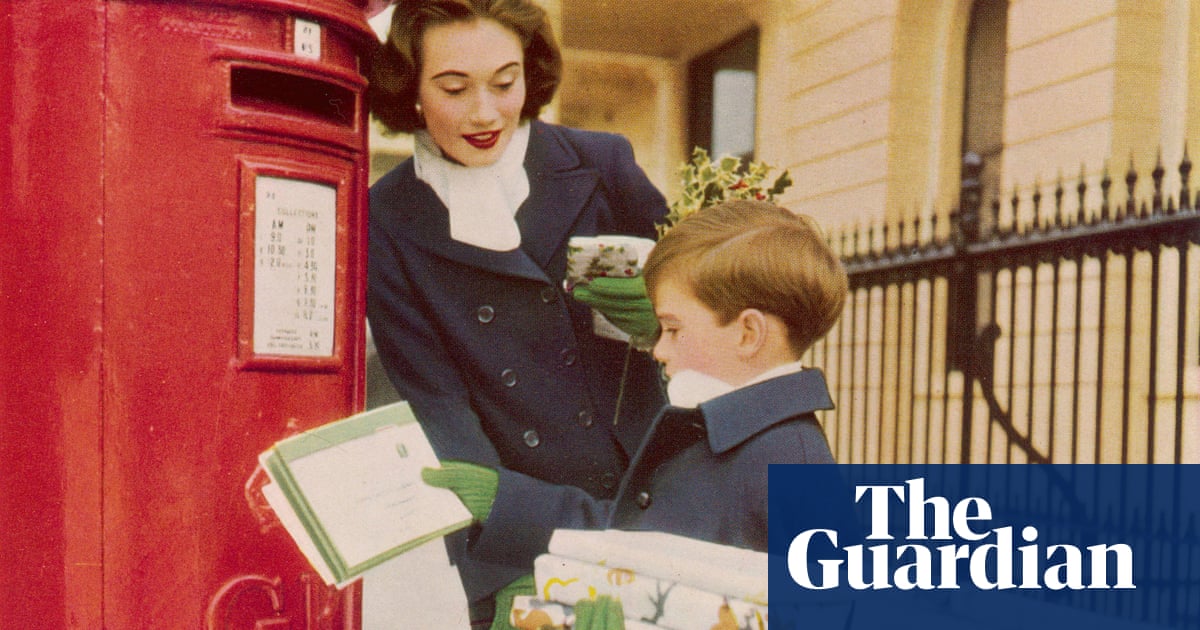
Britons are buying single Christmas cards or reaching for the glitter glue to make them as they opt for quality over quantity in an attempt to keep the festive tradition alive amid high postage costs.
A recent poll found a third of people intend to send fewer cards this year because of the cost. The price of a second-class stamp has risen by nearly 30% in five years to 75p. Over the same period a first-class stamp is up nearly 90% to £1.25.
With budgets under strain from the cost of living crisis, retailers say consumers are being creative, either buying singles for close relatives and friends or getting out the craft scissors and glue stick for the ultimate personal touch. John Lewis says sales of single cards are up 36%, while Hobbycraft and The Works have experienced strong demand for blank cards, stampers and festive-shaped stickers.
“We think the cost of postage may mean shoppers are sending fewer cards and instead taking the time to make personalised creations for their closest friends and family,” said Lisa Lort-Johnson, head of buying at The Works. “This year, we’ve noticed customers purchasing more embellishments to use for creative card-making versus traditional packs of pre-made cards.”
In a move precipitated by the pandemic, Card Aid no longer opens the pop-up shops in church halls and empty stores that once sold huge quantities of Christmas cards for a wide range of charities at this time of year. These days supporters are encouraged to buy from its website.
“We had wonderful years generating hundreds of thousands of pounds for charity,” said Hilary Blume, director of the Charities Advisory Trust, which is behind the Card Aid initiative. “We stopped because people weren’t buying cards.”
In its heyday, Card Aid used to get its stock ready to sell at October half-term “so people could get organised” with the average purchase being about 30 cards. “It was a huge thing… but life isn’t like that now,” continued Blume. “If the [postal] service is so terrible and it is £1.25 a knock, plus the cost of the card, why would you do it? Are you going to go out and spend £40 or £50 on Christmas cards?”
Even if it is no longer the norm to have a mantelpiece crowded with cards or strung on ropes around the room, Britons are still prolific card senders. With large numbers Christmas cards sold by schools and in charity shops, the total exchanged is hard to estimate. However, the Greeting Card Association (GCA) puts the figure at a surprisingly high 1bn a year.
Amanda Fergusson, the GCA’s chief executive, said sending a card was a “very British thing”, with the overall single-card market, which includes birthday cards, at £1.5bn last year. While some people might be sending fewer cards at Christmas, she said its research found that 18- 34-year-olds were sending more than a generation ago. “Cards are part of the fabric of our life in the UK.”
She added: “When I was young, my mother would come home with a box of 50 or 100 Christmas cards and we’d all sit around the table and write them. Today people put more effort into choosing either small-batch cards or individual cards for special people.
“Postage costs have an impact,” Fergusson added, but being able to send a card anywhere in the UK for 75p “still represents good value”.
Even if the sacks of Christmas cards being delivered by the Royal Mail are smaller these days, the annual trade is still a money-spinner for Scout Post, its mini rival. A Scouts spokesperson said the unofficial mail service was thriving, with 50 operating around the country this year.
With an average charge of 40p a card, Scout Post is an important source of funds, he said, adding: “Some schemes involve single scout groups covering a village, others join together to operate over a larger area. We anticipate around 250,000 cards will be delivered in the run-up to Christmas.”











